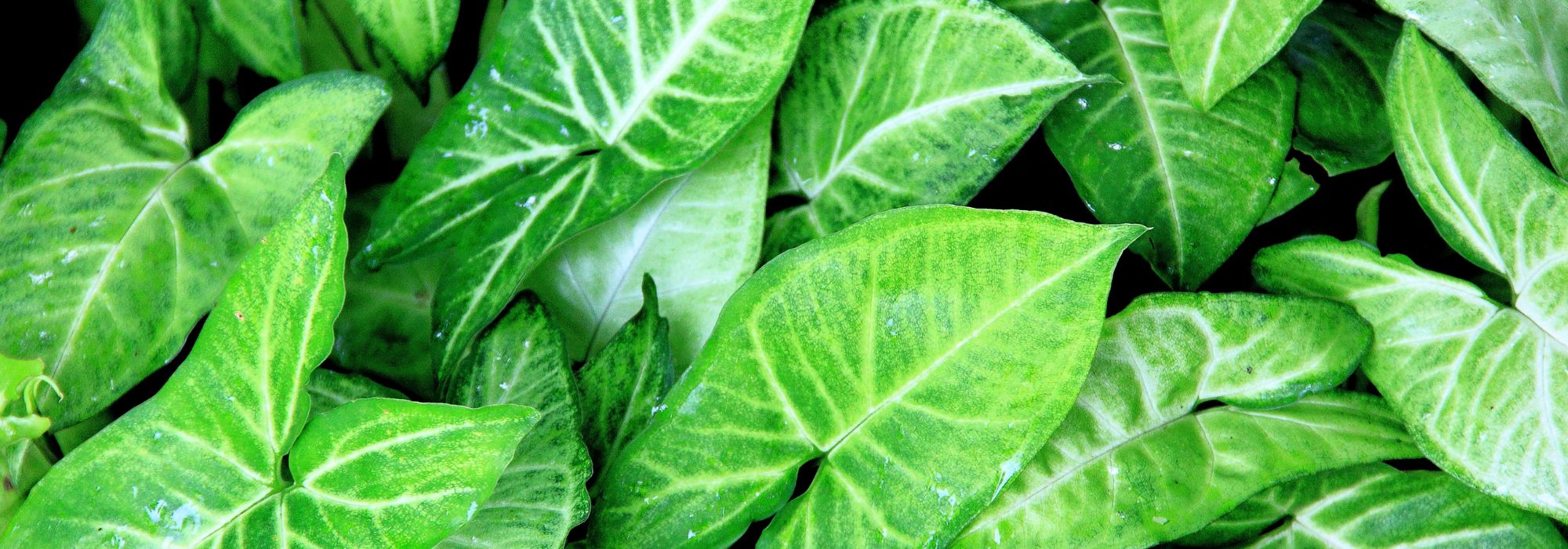
Syngonium - Goosefoot: indoor growing tips
Contents
Syngonium in a nutshell
- Syngonium is an easy-going houseplant.
- Its decorative foliage evolves with age and offers beautiful colours.
- It enjoys gentle light, a humid environment, and moderate watering.
- Propagation by cutting is simple and quick.
- Unfussy, goosefoot adapts to all styles of decoration.
The word from our expert
A tropical plant native to the humid forests of Central America, Syngonium, also known as goosefoot or arrowhead plant, captivates with its changing foliage and dynamic growth. It belongs to the Araceae family and develops, over time, long climbing or trailing stems adorned with initially sagittate leaves, which become more dissected at ripeness. This adaptable habit, combined with its ability to thrive indoors, makes it a highly sought-after decorative plant.
Easy to grow in pots, Syngonium enjoys a light, moist, but well-drained substrate, and bright exposure without direct sunlight. It thrives at a constant temperature, in a warm and slightly humid environment. It prefers ceramic pots or open terrariums, where it can flourish without the risk of excessive confinement. Some varieties, such as Syngonium ‘Maria‘ with its coppery foliage or ‘Pink Splash’, a pink Syngonium with rosy touches, add a graphic note to contemporary interiors as well as to more natural settings.
Its care remains simple: moderate watering, regular fertilisation during the growth season, and a few light prunings are enough to maintain a compact habit and dense foliage. In overly dry conditions, pests such as mealybugs or spider mites may appear, but well-managed humidity can help prevent them. Undemanding, the arrowhead plant quickly reveals its decorative potential as long as its need for moisture and stability is respected.
Very easy to propagate by stem cutting, the Syngonium is also an ideal plant to share. Each well-chosen stem segment can give rise to a new plant in just a few weeks, either in water or substrate. Its generosity, evolving aesthetics, and adaptability make this green plant one of the most popular in interiors, whether you are just starting with houseplants or already cultivating a true botanical passion.
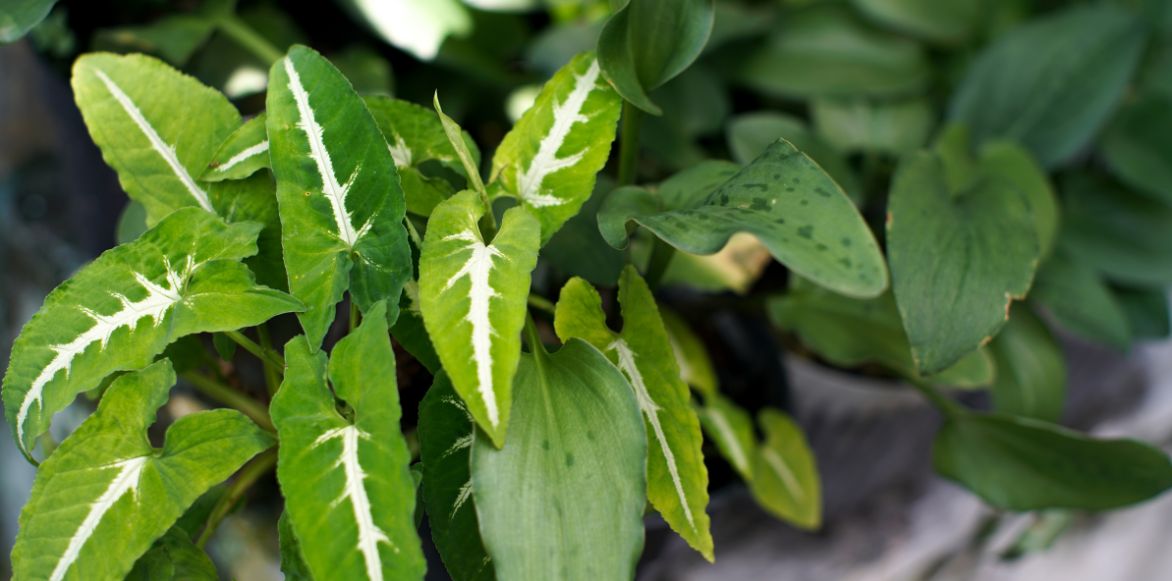
Some cultivars of Syngonium are distinguished by their foliage. This is the case with the variety ‘Pixie’
Botany and description
Botanical data
- Latin name Syngonium podophyllum
- Family Araceae
- Common name Arrowhead plant, Arrowhead vine, American evergreen, Nephthytis or Goosefoot
- Flowering in winter, but very rare indoors
- Height 20 to 90 cm
- Exposure bright indirect light or medium
- Soil type draining mix (potting soil, perlite and coco)
- Hardiness not hardy
The genus Syngonium belongs to the large family of Araceae, like Alocasia or Philodendron. Its name derives from ancient Greek syn (“together”) and goné (“reproduction”), referring to the partial fusion of its reproductive organs, a common anatomical characteristic among several aroids. In French, this plant is sometimes referred to as goosefoot or duck’s foot, due to the triangular or sagittate shape of its young leaves, which resemble the trace of a web-footed bird. However, it is also called nephthytis and Arrowhead plant. The most cultivated species is Syngonium podophyllum.
In its natural habitat, Syngonium grows in the humid tropical forests of Central and South America. It develops as climbing or creeping lianas, often rooted in the crevices of trunks or forest soil, in the shade of large trees. This ability to thrive in filtered light and humid conditions explains its ideal adaptation for indoor cultivation, where it easily accommodates dimly lit rooms and limited care. Its changing foliage, which transitions from pointed juvenile forms to more dissected leaves at maturity, is as appealing as its ability to produce new shoots quickly.
Plant enthusiasts appreciate the diversity of cultivars available on the market. Among the most sought after, Syngonium ‘Maria’ charms with its coppery foliage with bronze highlights, while Syngonium ‘Pink Splash’ catches the eye with its irregular pink splashes on a soft green background. Less common but equally interesting, Syngonium wendlandii stands out with its marked silver veins on a velvety, almost black-green foliage with a unique texture. These variations in colour and texture make them highly prized plants in contemporary interiors as well as in more bohemian or green spaces.
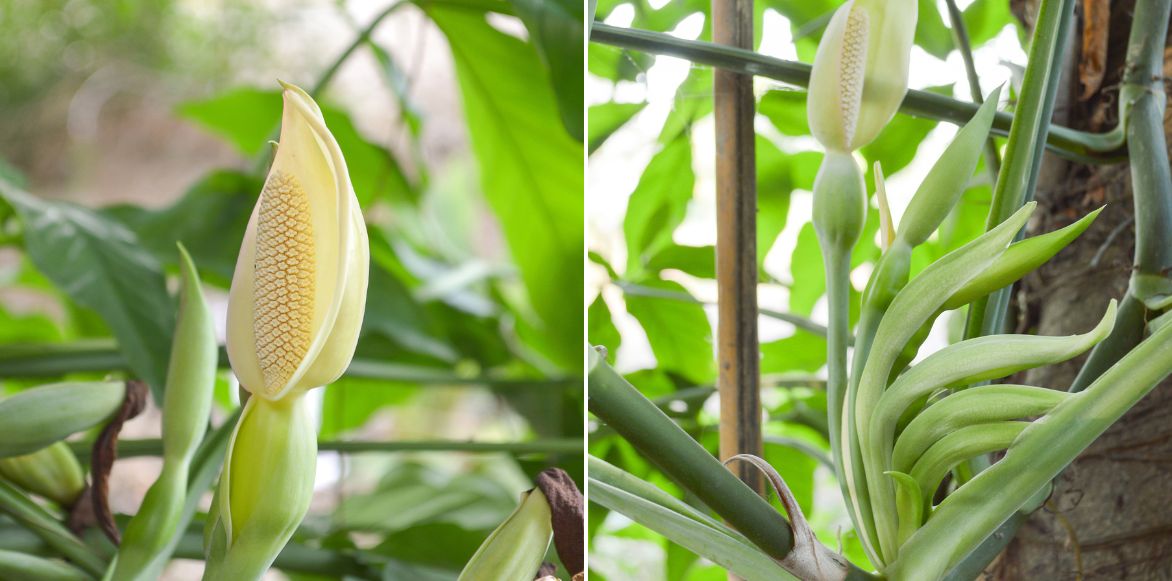 Very rare in indoor cultivation, the flowering of Syngonium reveals itself in the form of a spathe, an inflorescence typical of the Araceae.
Very rare in indoor cultivation, the flowering of Syngonium reveals itself in the form of a spathe, an inflorescence typical of the Araceae.
Description of the genus Syngonium
Syngonium presents an appearance and an evolving morphology, characteristic of climbing tropical plants. In its juvenile state, it adopts a compact and bushy habit, forming a tuft of flexible stems emerging directly from the collar. This habit changes over time: as it grows, the plant develops long creeping or climbing stems, which seek to climb using adventitious roots. These roots, fine but vigorous, appear at the nodes and easily anchor themselves in a stake, support, or even in moss in a humid atmosphere, allowing the plant to colonise its environment vertically. The underground root system remains superficial, fibrous, and not extensive, making pot cultivation closely manageable.
It is not a trunked plant per se, but a collection of cylindrical, hollow, and jointed stems, more or less upright depending on the conditions. These stems elongate with age, become sturdier, and can be pruned to contain their growth. In species like Syngonium podophyllum, these stems can reach several metres if given something to climb.
The foliage is the main asset of the genus. It evolves significantly between the juvenile phase and the adult state. Young leaves are simple, sagittate or hastate, often glossy and thick. As they grow, they become deeply lobed or sometimes almost pinnate, resembling those of certain philodendrons.
Flowering, although possible in cultivation, remains infrequent indoors. It takes the classic form of Araceae, with a discreet spathe surrounding a spadix, usually cream or greenish. This type of inflorescence, not very ornamental, only forms when the plant is sufficiently mature and in conditions close to its tropical habitat. Fruiting, even rarer in domestic cultivation, gives rise to small grouped berries, inedible, containing spherical seeds.
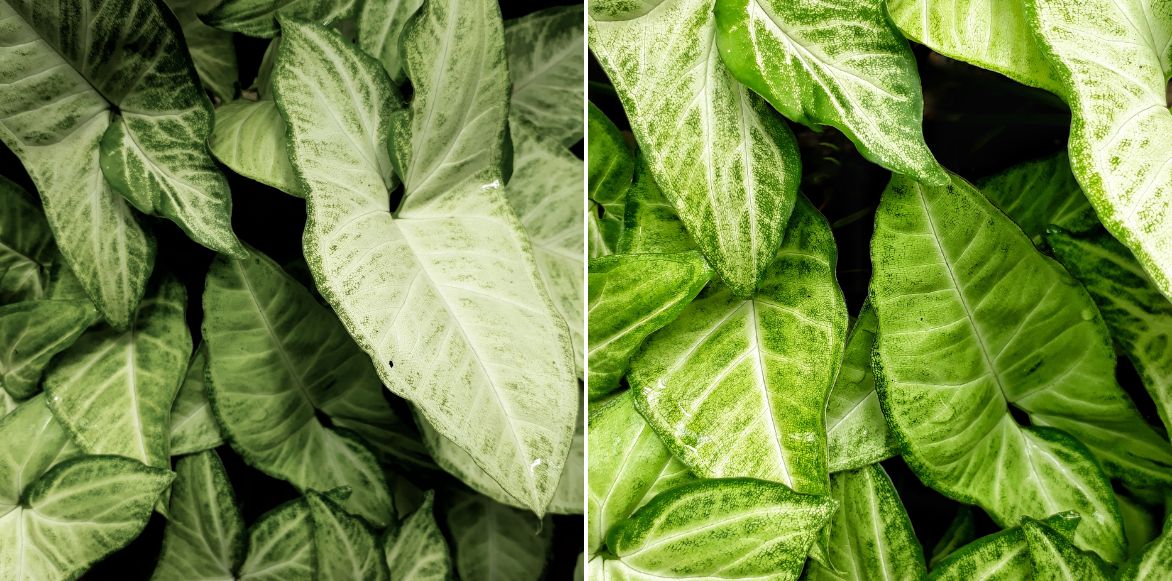 Depending on the varieties and cultivars, there is a beautiful variety of different foliage, variegated or coloured.
Depending on the varieties and cultivars, there is a beautiful variety of different foliage, variegated or coloured.
“`
Syngonium varieties
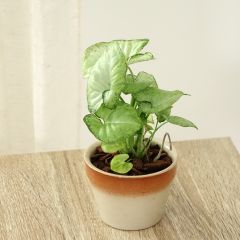
Syngonium Confetti - Arrowhead vine
- Height at maturity 45 cm
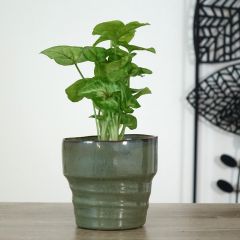
Syngonium podophyllum Golden Allusion - Arrowhead vine
- Height at maturity 45 cm
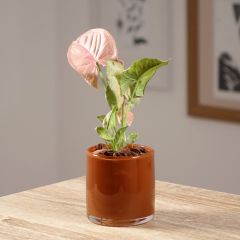
Syngonium podophyllum Neon Robusta - Arrowhead vine
- Height at maturity 45 cm
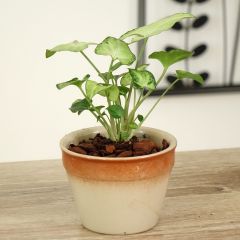
Syngonium podophyllum Snow White - Arrowhead vine
- Height at maturity 45 cm
Discover other Houseplants
View all →Available in 0 sizes
Available in 1 sizes
Available in 1 sizes
Available in 1 sizes
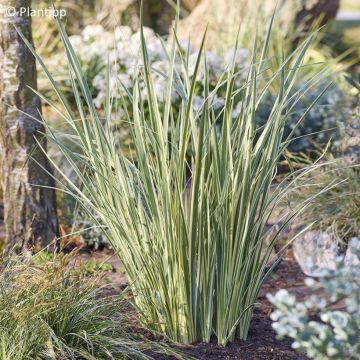
Available in 1 sizes
Available in 1 sizes
Available in 1 sizes
Available in 1 sizes
Available in 2 sizes
Available in 1 sizes
How to pot a syngonium?
When to pot your Syngonium?
Planting the Goosefoot ideally takes place in spring, when natural light increases and the plant enters its active growth period.
What pot and substrate to use?
To provide conditions similar to its tropical habitat, it is essential to choose a well-draining, airy, and rich substrate that retains moisture without causing stagnation. A good potting mix for houseplants, lightened with perlite or composted pine bark, ensures healthy rooting. Adding coconut fibre or sphagnum is also beneficial for maintaining consistent moisture around the roots.
The ideal pot is lightweight yet stable, with drainage holes. A breathable material like terracotta promotes substrate aeration but may increase drying. For drier interiors, a plastic or glazed ceramic pot helps retain moisture longer. The container should be suited to the size of the root system, without excess, as the Syngonium prefers to be slightly snug to better develop its foliage. A tall or deep model may be suitable for climbing varieties fixed to a support.
How to best plant Syngonium?
- Start planting by placing a drainage layer at the bottom of the pot, made of clay balls or gravel.
- Next, position the plant in the centre, ensuring not to bury the collar.
- The substrate is lightly compacted around the roots and then generously watered.
Where to place the plant?
In the weeks that follow, the plant should be placed out of direct sunlight, in a bright, warm location with moderate to high ambient humidity. A stable temperature between 18 and 26 °C encourages recovery. In dry interiors, a water tray or regular misting significantly improves the plant’s comfort.
Repotting Syngonium
Repotting is necessary every two to three years, also in spring, as soon as the roots surface or growth slows despite regular feeding. This is also an opportunity to partially renew the substrate, prune excessively long stems, and possibly divide the densest clumps. With each repotting, it is advisable not to increase the pot diameter by more than two to three centimetres to avoid excess moisture in an oversized volume of soil.
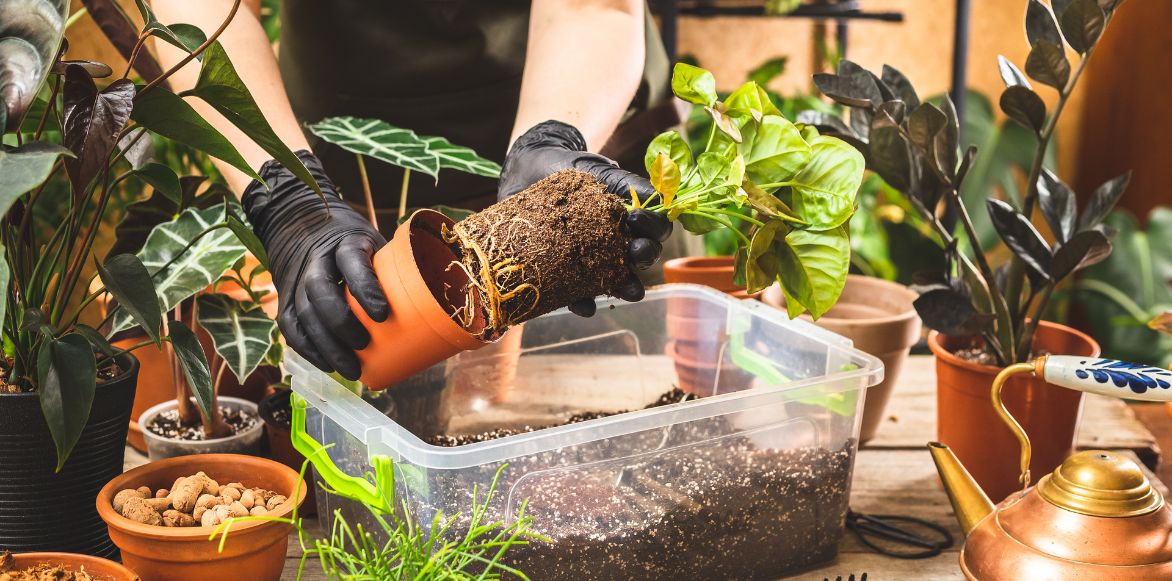
Remember to repot your Syngonium in a rich, well-draining substrate.
Caring for Syngonium indoors
Watering
A tropical plant by nature, it enjoys a stable and humid atmosphere, but does not tolerate excess water. The watering of Syngonium should remain moderate yet regular, allowing the substrate to dry on the surface between waterings. During the growth period, from spring to early autumn, it is important to water more frequently, especially if the temperature exceeds 22 °C. In winter, the needs decrease: watering becomes less frequent, but the plant should never experience prolonged drought.
Fertilisation
To support leaf development, a gentle but continuous fertilisation is recommended. A balanced liquid fertiliser for green plants, applied once or twice a month, is more than sufficient. However, in case of excess nitrogen, young leaves may become too green or soft: maintaining a good balance is essential.
Pruning
Pruning, while not essential, helps to control the plant’s habit and encourages more compact branching. Simply pinch the tips of overly long or unbalanced stems. The cut stems can then be easily propagated in water or moist substrate. Regular monitoring of the leaves also allows for the removal of damaged or yellowing parts, which could attract parasites or slow down growth.
Possible precautions
Some simple precautions significantly improve the health of Syngonium: avoid cold drafts, maintain sufficient humidity, and protect the plant from direct sunlight that could scorch its leaves. Particular vigilance is required in heated indoor environments, where dry air can lead to browning of the tips. A bright location, well-measured watering, and a slightly humid atmosphere are all that is needed to make it a vigorous and decorative plant all year round.
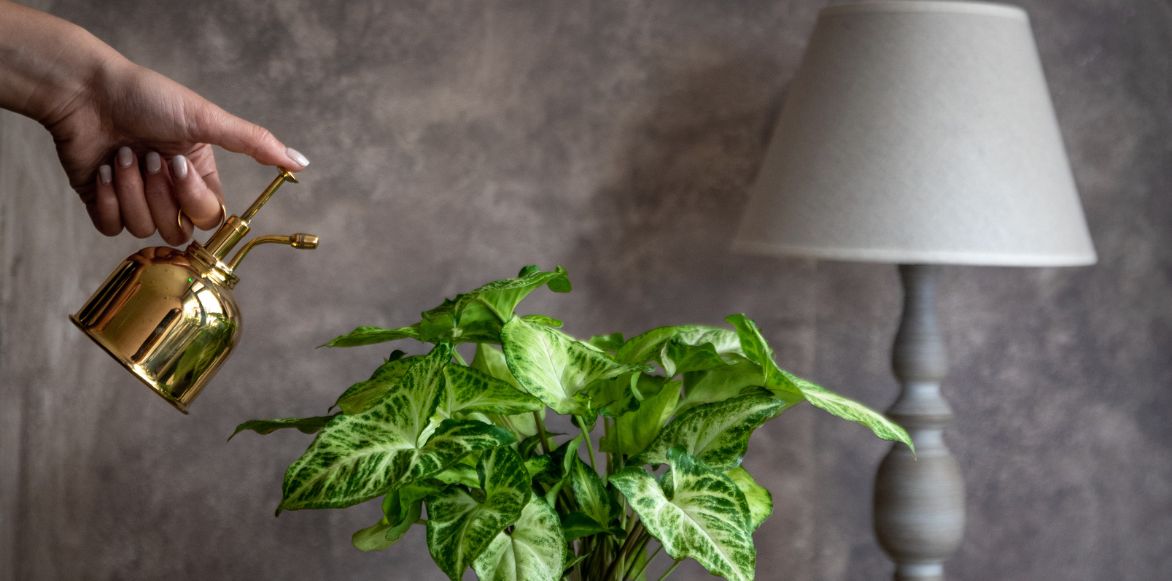 If the air in your home is too dry, consider misting your Syngonium daily.
If the air in your home is too dry, consider misting your Syngonium daily.
Pests and diseases of Syngonium: preventing and identifying issues
Syngonium is generally not very susceptible to diseases when grown under good conditions. However, certain cultural mistakes or overly dry environments can encourage the appearance of pests and physiological disorders.
Pests on Syngonium
The main enemy of Syngonium indoors, especially when exposed to an overly dry atmosphere, is the red spider mite, which weaves fine webs on the undersides of leaves and causes punctate discolouration. Higher humidity or regular misting significantly limits its presence. In confined or poorly ventilated environments, mealybugs can also settle in the axils of the leaves or along the stems, leaving cottony clusters and sucking the sap, which weakens the plant.
Thrips, discreet but formidable, can also pierce the tissues of the arrowhead plant, leading to deformations and silver streaking on the foliage, particularly in variegated varieties. Quick control is essential to prevent their spread to other plants.
Diseases of Syngonium
Regarding diseases, overwatering is the cause of the most frequent problems. A waterlogged substrate or a pot without drainage can lead to root rot, of fungal origin, which manifests as rapid yellowing of the leaves and general wilting. In Syngonium grown in air that is too cold and humid, brown leaf spots may appear, sometimes accompanied by necrosis at the leaf edges. In all cases, it is essential to adjust watering, improve ventilation, and isolate the plant if a pest is suspected.
Although robust, the arrowhead plant reacts quickly to its environment: yellowing foliage or abnormal spots often signal a lack of light or excess moisture, rather than a direct attack. Good preventive maintenance remains the best protection.
How to take cuttings of Syngonium?
Syngonium, or nephthytis, propagates very easily by propagation by cuttings of stems, a method that is both reliable and quick, allowing the characteristics of variegated varieties to be preserved. The ideal time for propagation is in spring or summer, when the plant is in full growth.
Simply take a section of healthy stem, bearing at least one well-formed node, as this is where the future roots will develop. The cut is made just below the node, using a clean, sharp tool. Leaves that are too close to the base are removed to prevent them from soaking in water or substrate.
The stem can then be placed in a glass of clear water, ensuring that only the lower part is submerged. Root development is rapid: in a few days to a few weeks, depending on the temperature, fine roots will appear.
Another option is to plant the cutting directly in a light, moist, and well-draining mix, composed of perlite, coconut fibre, and potting soil. In this case, a warm and humid atmosphere will promote rooting. Using a mini-greenhouse or a transparent bag placed over the pot helps to increase ambient humidity, provided that regular ventilation is ensured to prevent mould.
Once the roots are well-formed, the young plant can be repotted into a suitable pot and treated like an adult Syngonium. This technique also allows for restructuring a mother plant that has become too invasive, while quickly obtaining new specimens to give away or integrate into other plant displays.
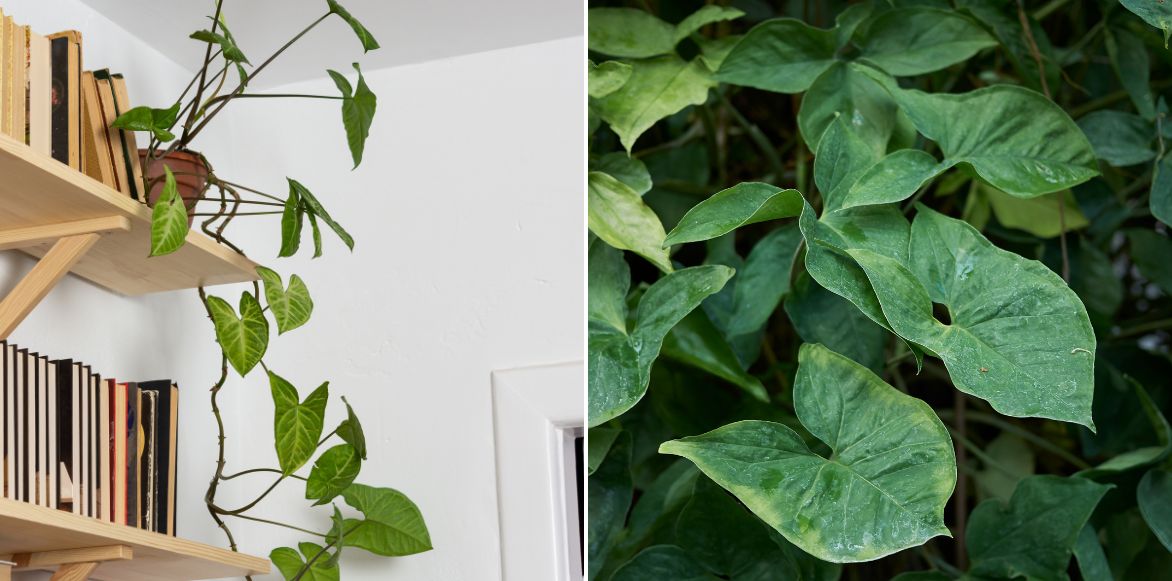 To rejuvenate a Syngonium that has become a bit too leggy, consider propagating it!
To rejuvenate a Syngonium that has become a bit too leggy, consider propagating it!
Showcasing Syngonium indoor
Syngonium, with its flexible habit and often variegated foliage, naturally finds its place in bright yet filtered interiors, where its light silhouette adds a lively and graphic touch of greenery. It particularly thrives in urban, bohemian, or natural settings, where its evolving leaves create rhythm and visual contrast. Colourful varieties like ‘Pink Splash’ or coppery ones like ‘Maria’ bring warm tones to light wood shelves, macramé hangers, or minimalist consoles.
Its aerial or trailing growth adapts well to both stake cultivation and hanging in a suspended pot that allows its stems to cascade lightly. In terms of containers, a smooth or textured ceramic pot, in matte or natural shades, highlights the delicacy of its foliage. Subtle materials like stoneware, raw terracotta, or even polished concrete create an elegant contrast with the coloured veins.
An open terrarium is an excellent option, especially for young plants or dwarf varieties. Due to its moderate humidity needs and ability to thrive in soft light, Syngonium integrates well into a display with mosses, stones, and small ferns. In contrast, closed models are not suitable for the long term, as overly confined air may encourage fungal diseases. Placed in a large vase or an open jar, it effortlessly evokes a tropical atmosphere while maintaining easy care.
Its clean aesthetic, adaptable growth, and varied colours allow it to be integrated into all types of interiors, from the most contemporary to the most plant-filled, each time bringing a touch of freshness and lightness.
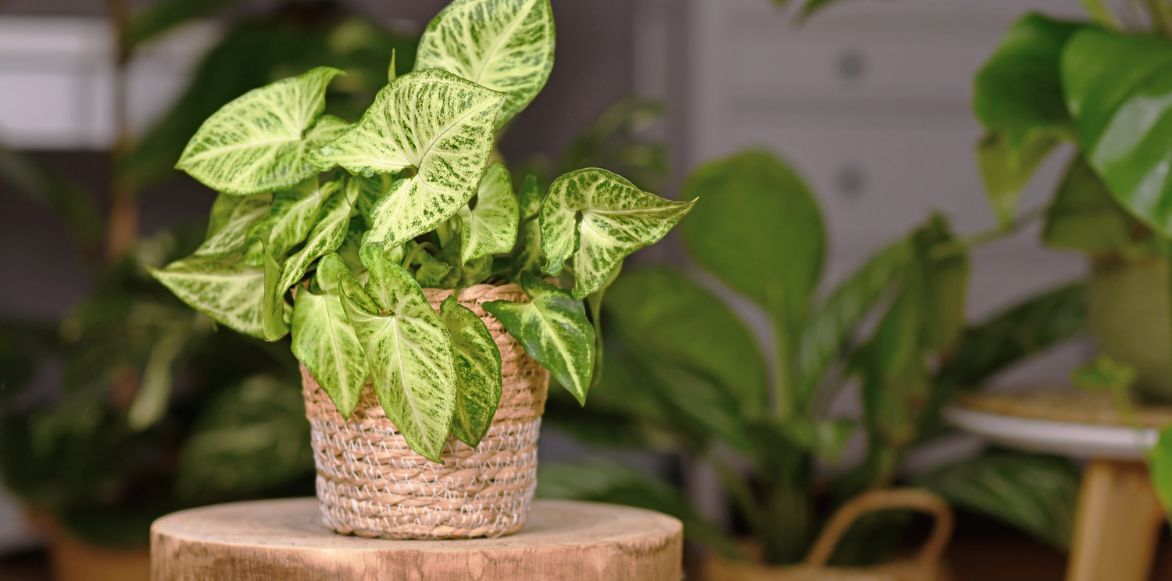
Syngonium is a beautiful plant that stands on its own. A simple, understated pot highlights its beauty.
Useful resources
- Discover our range of indoor green plants and flowering plants to bring exoticism and elegance to your home.
- Subscribe!
- Contents































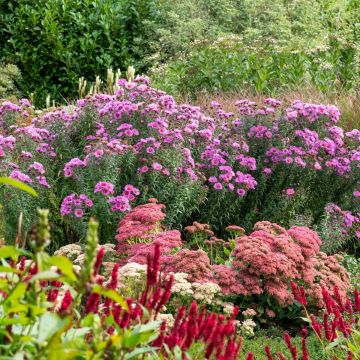
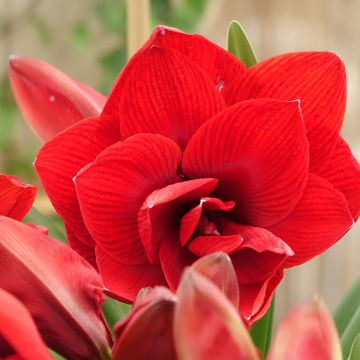


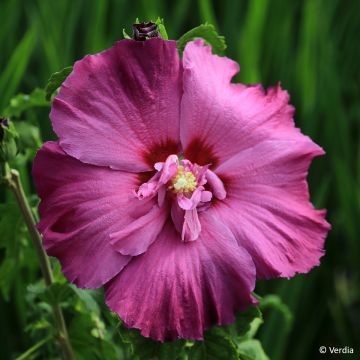
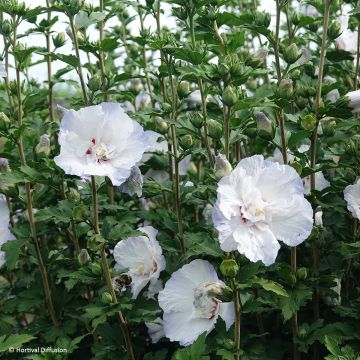
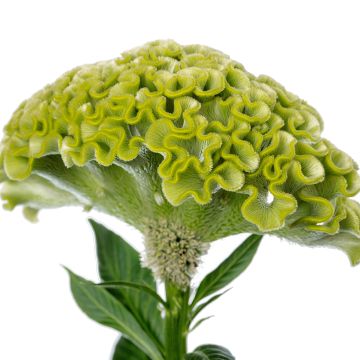
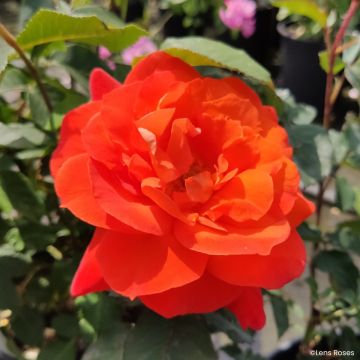
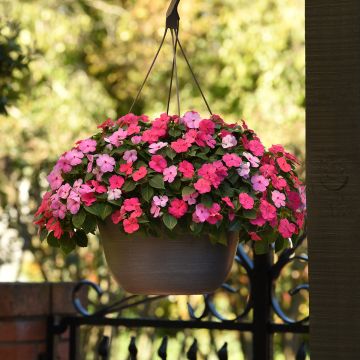
Comments